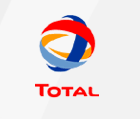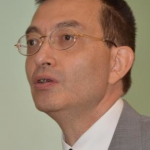

The example provided concerns rate-based modelling of absorption columns. The presentation lists first the limitations found in the software tool used so far, limitations which led to the decision to study the acquisition of a new tool with a number of required features including ones related to interoperability. The solution adopted with gPROMS from PSE Ltd is then demonstrated.
Michel begins by stating what are the weaknesses of an equilibrium model approach for absorption, then describes what the rate-based modelling approach entails.
The limitations of the current tool used for rate-based column modellling are then described including the lack of development for a number of years. To study a possible alternative, the necessary model features have been documented. They include convergence capabilities, mass and heat transport description, absorption and distillation simulations with a large range of internals, reactive absorption and distillation simulation, capability to use third-party thermodynamic models, the ability to use developed model within a full process model.
Michel next describes two use cases of interoperability with CAPE-OPEN that fit with the capabilities listed before for a new software tool. Then the solution tested and adopted with gPROMS is detailed in some depth: which equations are included, which thermodynamic properties are required from Aspen Properties, how these calls are made within gPROMS, how a CAPE-OPEN Unit Operation can be exported from gPROMS (gO:CAPE-OPEN) and used in Aspen Plus.
After a live demo, a number of known issues are mentioned. Michel concludes on how the solution fits with the requirements set.
